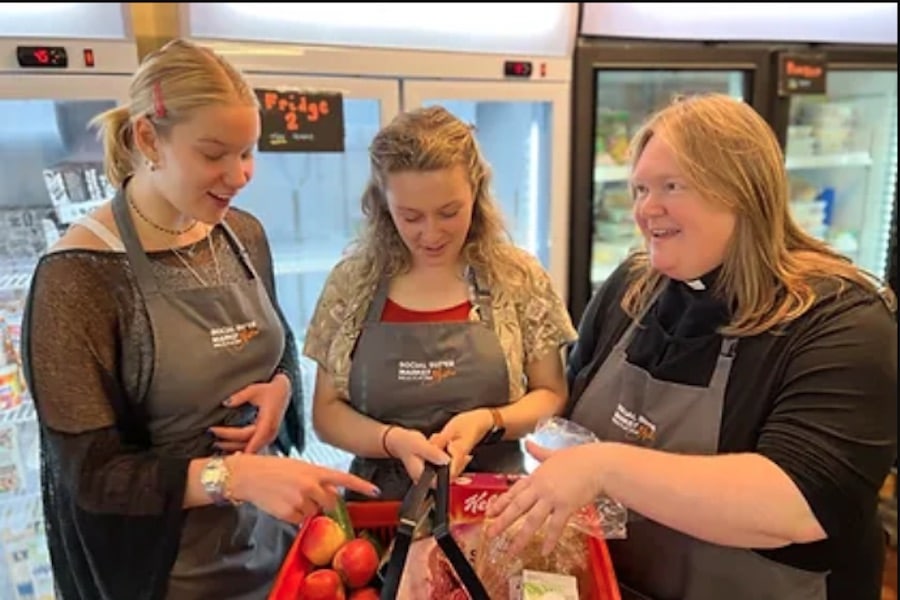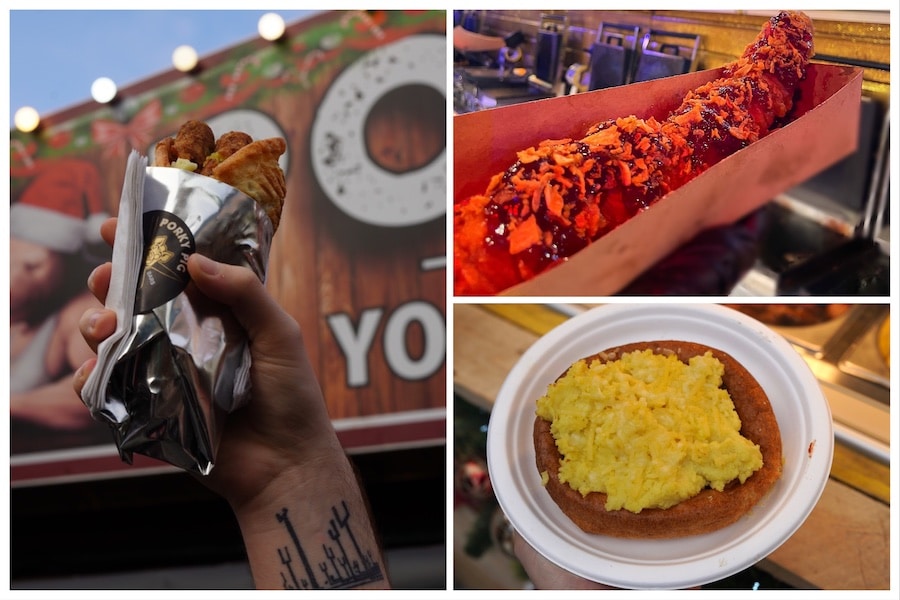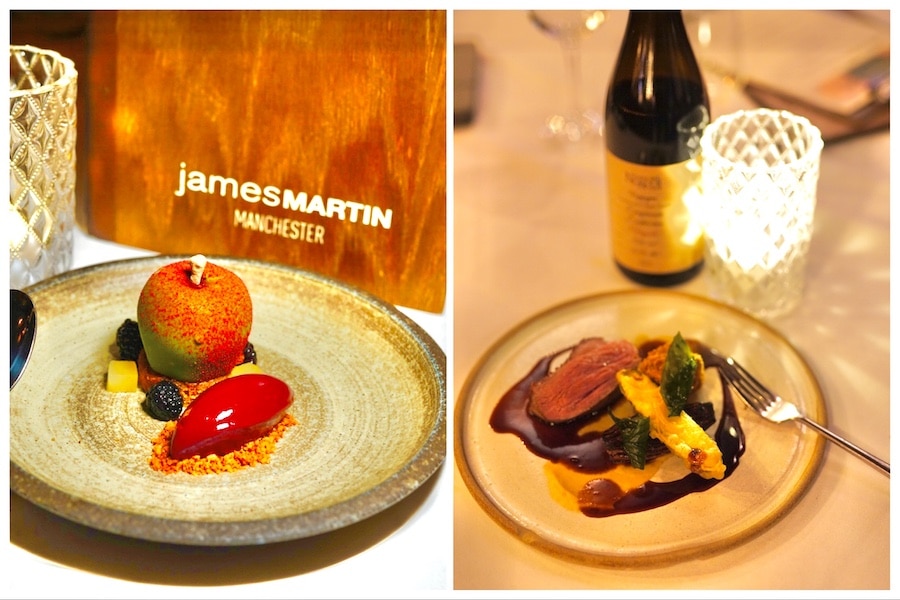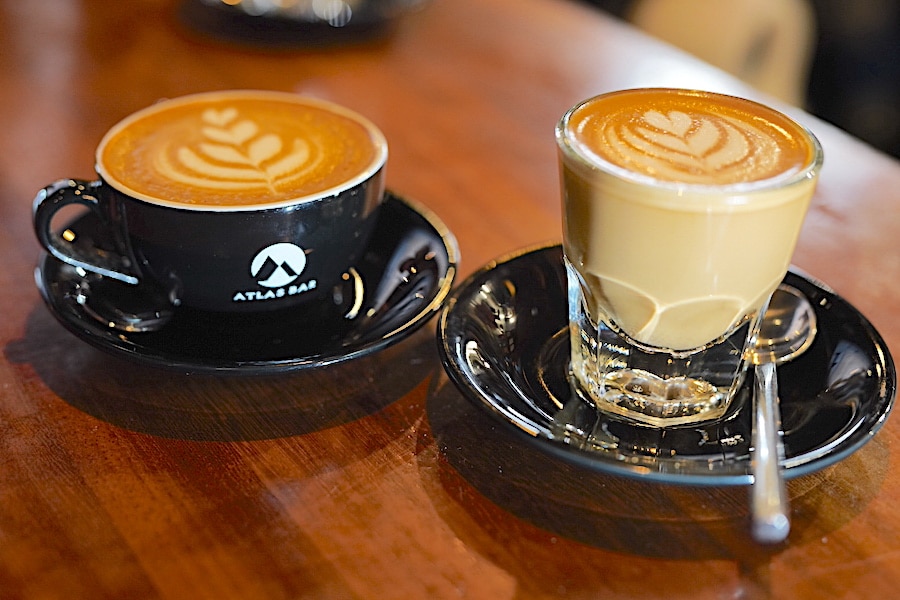Uncover the secret to irresistible Malaysian cooking at Tampopo cookery school
- Written by Thom Bamford
- Last updated 1 year ago
- City of Manchester, Food & Drink, Sponsored

Tampopo Cookery School at the Corn Exchange has you covered.
Embark on a culinary adventure with Tampopo Cookery School, where the vibrant world of East Asian cuisine comes alive through tantalising aromas and exquisite flavours.
Discover the secrets of Malaysian cooking and immerse yourself in a hands-on experience that unveils the art behind dishes like char koay teow and deliciously fresh summer rolls.
Step into the captivating world of flavours, where East Asian cuisine beckons with its tantalising aromas and exquisite taste.
Tampopo Cookery School

Led by the incredible Ana Abdullah, who runs a successful cooking school in her home city of Kuala Lumpur, the Tampopo school is a perfect gift for those who just love cooking or a subtle suggestion to our friends who can’t cook that it’s time to dust off their skills.
Ana ran her school in Kuala Lumpur for 15 years, and made the move to Chorlton to broaden her culinary horizons.
Speaking to I Love Manchester, she said: “Cooking is my great passion, second only to meeting people and seeing how they look at life.
“I think Malaysia is often overlooked in comparison to Thailand or Vietnam, but it’s such a beautiful place – everyone should go and visit!
“I am just trying to spread the joys of Malaysian cooking, the real authentic stuff.”
Located in the stunning Corn Exchange, Tampopo serves a beautiful selection of food from across South East Asia.
Tampopo Corn Exchange
Located at the centre of the centre of Manchester, Tampopo is just a stone’s throw from the Arndale, Printworks, Manchester Arena and the Northern Quarter.
Whether you’re shopping, gigging, cinema-going or bar-hopping, their Corn Exchange branch will give you the street-food fix you need to keep your day rolling along nicely.
But if you’re looking to learn, these cooking classes could be right up your street.
The instructor, Ana, welcomed us with warmth and enthusiasm.
Her passion for food and cooking passed down through generations in Malaysia was infectious as she asked us to ‘cook with a smile on our faces’ and massage all the food with love.
We were welcomed to the restaurant with Vietnamese tea and coffee, a deliciously sweet blend of condensed milk and black coffee as we got to know the other wanna-be chefs.
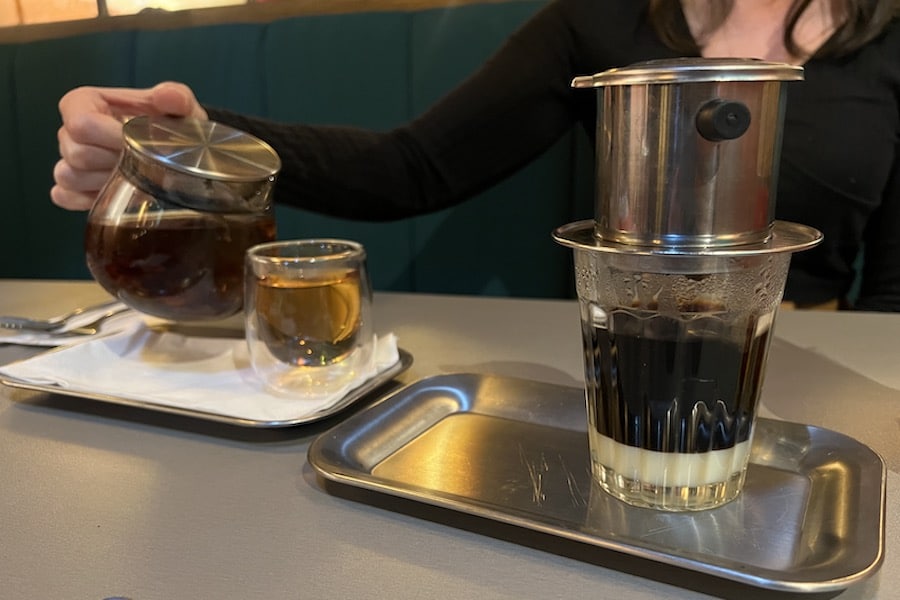
She talked us through some of the popular ingredients used in cooking from Malaysia, from the 100s of different types of gingers to lemongrass and much, much more.
The room buzzed with excitement as we gathered around cooking stations, each equipped with ingredients and the tools to whip up a masterpiece.
Tampopo Menu
The promise of uncovering the art behind dishes like corn fritters, Summer rolls, and char koay teow was exciting for someone like me who has very little experience in the Kitchen.
We began with the corn fritters, the sizzling sound of a batter hitting hot oil filling the room.
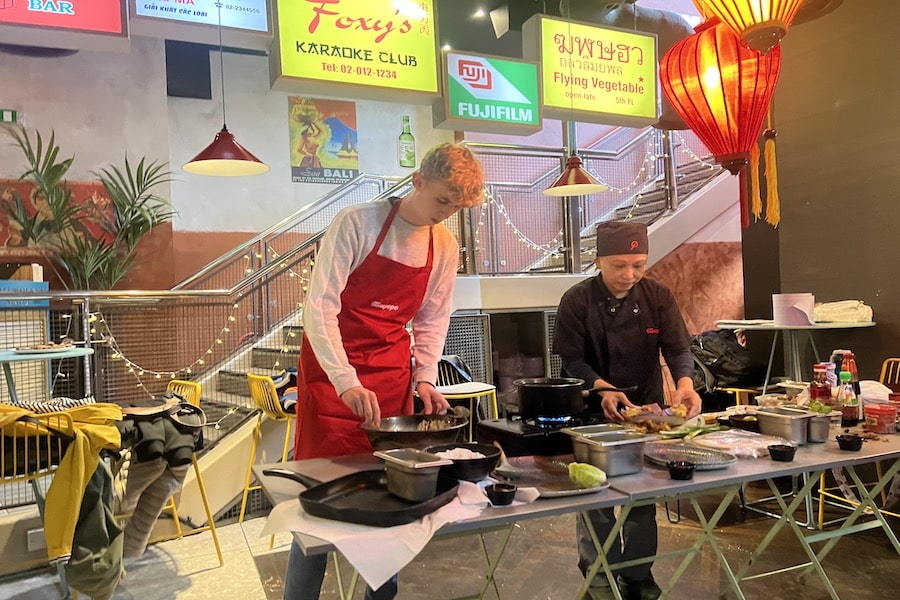
The process was a delicate dance of precision and creativity, as we crafted crispy, golden fritters that promised to be a taste of heaven.
Ana carefully instructed us all the way, making sure nobody set their aprons or eyebrows on fire.
The source of her culinary inspiration arises from her family background and upbringing in rural Malaysia.
Notably, her father, who was a skilled cook and teacher, played a pivotal role in her learning how to cook.
Fondly reminiscing, she shares, “He upheld strict standards,” a nostalgic smile accompanying her words. “It nearly jeopardised my aspirations of becoming a cook!
“The slightest misstep in cutting ingredients or the subtle nuances of rice preparation would earn a gentle reprimand.
“While I found it vexing during my youth, I now recognise its value. His intentions were sincere; his dedication to food was unwavering.”
The proof was in the pudding, as her instruction resulted was a delicious blend of fresh ingredients, fried to crispy perfection.
Summer Rolls at Tampopo
Next up was the Summer Rolls, a delicate rice paper enveloping vibrant vegetables and succulent prawns or chicken.
The lettuce, vermicelli noodles and carrot are then rolled delicately in soft rice paper wrappers and served up with a sweet and fragrant sauce.
Each roll was a testament to patience and finesse, or a complete flop (in my experience), with each table competing for the most aesthetically pleasing roll.
It’s fair to say the results were mixed, but the taste was uncompromised as the delicious fragrance of lemongrass, lime, onion and garlic dip supercharged the delicate freshness of the rolls.
Char Koay Teow
Next on the menu, was Char Koay Teow, often simply referred to as “CKT,” a popular Malaysian dish that originates from Penang, a state in northern Malaysia.
It is a stir-fried noodle dish that features flat rice noodles, commonly known as “koay teow,” which are cooked with various ingredients to create a flavorful and aromatic dish.
The main components of Char Koay Teow are:
Flat Rice Noodles: These wide and flat rice noodles are the foundation of the dish. They are stir-fried until they absorb the flavours of the other ingredients.
Protein: Char Koay Teow can include various proteins such as shrimp, prawns, chicken, Chinese sausage (lap cheong), and sometimes even crab.
Eggs: The dish usually incorporates beaten eggs, which are cooked alongside the other ingredients to create a scrambled texture that adds richness to the dish.
Bean Sprouts: Fresh bean sprouts are often added to provide a crunchy contrast to the soft noodles and other ingredients.
Chives or Green Onions: These are commonly used to enhance the dish’s flavour and provide a touch of freshness.
Soy Sauce and Seasonings: A mixture of soy sauce, dark soy sauce (for colour and flavour), and other seasonings is used to season the noodles and create the signature taste of Char Koay Teow.
Chilli Paste: A crucial element in many versions of Char Koay Teow is the chilli paste, which adds spiciness and depth of flavour. Depending on personal preference, the level of spiciness can be adjusted.
We learned the intricacies of putting the dish together, the delicate balance of these ingredients and how it was a staple of the Malaysian diet.
It’s an East Asian street food classic and for good reason.
Flames danced beneath works as we stirred and tossed, coaxing the flavours to mingle into a harmonious symphony of taste.
The aroma that wafted from the woks was intoxicating, a prelude to the culinary masterpiece that awaited us.
Caramelising our delicious sauce consisting of caramelised soy, oyster sauce and homemade chilli paste, the flavours came together to form a powerhouse of taste.
East Asian Flavours in Manchester
We all tucked into our feasts together and enjoyed the spoils of our toils.
Each bite was a reminder of the skills we had learned throughout the evening in casual and relaxed settings.
Tampopo Cookery School had not just taught us how to create stunning dishes; it had granted us a passport to a world where flavours held stories and cooking was an art.
As I left the school, apron draped over my arm and recipes in hand, I couldn’t help but feel a profound sense of accomplishment that I’d learned some new skills, and had a great time doing it.
Tampopo Cookery School is more than just a cooking class; it’s a journey of exploration and discovery.
Each dish becomes a canvas for creativity, and each technique becomes a brushstroke in the art of cooking.
As you bid adieu, armed with newfound skills and a collection of recipes, you’ll carry with you the confidence to shine at your next culinary endeavour.
Ingredients that had before been mysterious and intimidating were now firmly in the cooking locker, and I was ready to show off at the next dinner party by using caramelised soy, squid sauce, and an array of new and exciting ingredients that promised to wow anyone who would try them.
Tampopo Cookery School – £70 Per Person – £120 for a ticket for two people
If you want to get stuck in at this awesome cooking class, you can check out the next classes and when they are by clicking here.
- This article was last updated 1 year ago.
- It was first published on 23 August 2023 and is subject to be updated from time to time. Please refresh or return to see the latest version.
Did we miss something? Let us know: [email protected]
Want to be the first to receive all the latest news stories, what’s on and events from the heart of Manchester? Sign up here.
Manchester is a successful city, but many people suffer. I Love Manchester helps raise awareness and funds to help improve the lives and prospects of people across Greater Manchester – and we can’t do it without your help. So please support us with what you can so we can continue to spread the love. Thank you in advance!
Got a story worth sharing?
What’s the story? We are all ears when it comes to positive news and inspiring stories. You can send story ideas to [email protected]
An email you’ll love. Subscribe to our newsletter to get the latest news stories delivered direct to your inbox.

Confidence, clothing and coaching – how this charity is changing lives in Greater Manchester

Review: Wonder Boy at the Lowry ‘explores the power of communication, resilience and friendship’

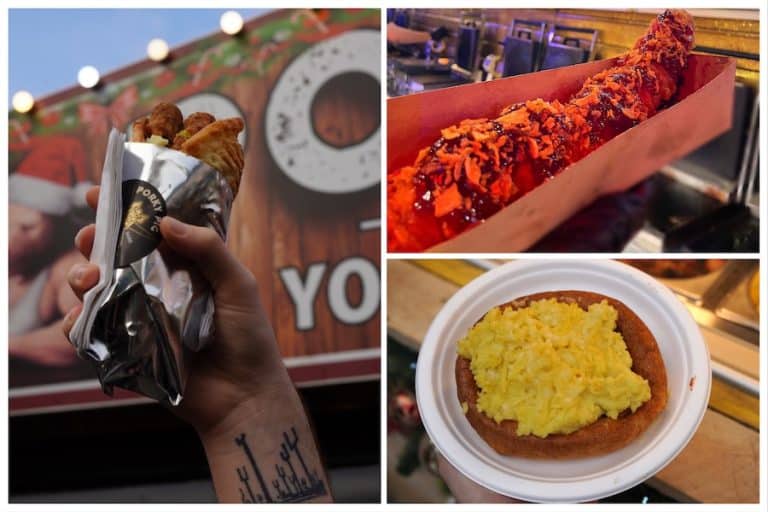
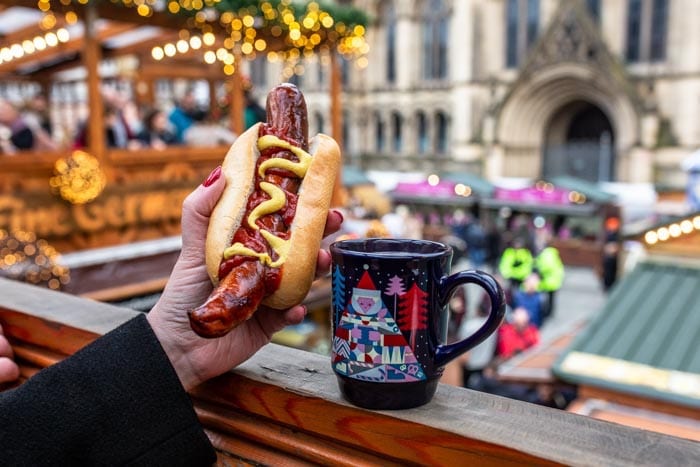
How much are bratwursts, beer and gluhwein at Manchester Christmas Markets 2024?









